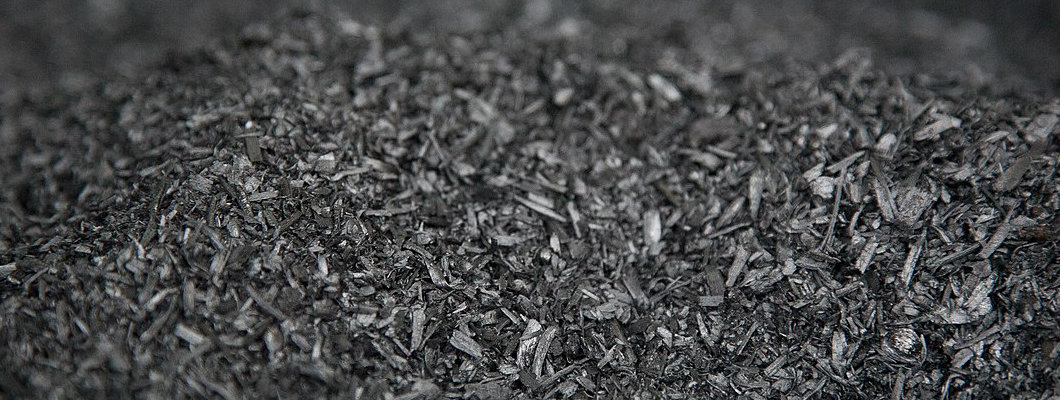
Title image above is attributed to Oregon Department of Forestry, CC BY 2.0 https://creativecommons.org/licenses/by/2.0, via Wikimedia Commons
First published 3rd March 2023
Backstory
I first heard of biochar maybe back in the early 2000s. It sounded really, really interesting, but I was somewhat put off by the $120 (or thereabouts) book on the subject the place I heard about it from was pushing!
University textbooks are overpriced at three-figure sums these days as it is, and they wanted this for a book on biochar back then?* I smelled a trendy fad being cashed in on, didn’t buy it, but did read up on it elsewhere to get up to speed. I came to the conclusion that yes, biochar is very much a legit thing, yes, it is hyped up with too many vested interests, and — for me at least — it just wasn’t worth all the fuss and bother that went with it.
(* I have no idea if that particular book is still around, but was gobsmacked to discover you can, today, buy any number of books on biochar priced anywhere from $200-$400! But there are plenty more reasonably priced below $50 as well.)
I was curious to revisit biochar recently, to see if my opinions had changed after all these years. The tl;dr version is: they haven’t. But if you’re interested to know why, then please read on!
What is Biochar?
One definition of biochar is “the lightweight black residue, made of carbon and ashes, remaining after the pyrolysis of biomass”. Pyrolysis is the burning of organic matter (typically wood) in the absence (or near absence) of oxygen, as opposed to combustion, burning in the presence of oxygen.
Another definition — which I couldn’t find on the International Biochar Initiative website, but which is attributed to them by Wikipedia — is “the solid material obtained from the thermochemical conversion of biomass in an oxygen-limited environment”.
Both definitions could equally be applied to charcoal — “[c]harcoal is a lightweight black carbon residue produced by strongly heating wood (or other animal and plant materials) in minimal oxygen to remove all water and volatile constituents.”
Going back to that biochar page, right at the top it states “This article is about charcoal which goes into soil.”
That works for me: biochar is charcoal which goes into soil.
The Origins of Biochar
European exploration of the Amazon began in the 16th century, and reports soon came back of ‘terra preta de índio’ (Portuguese for ‘black soil of the Indian’). Terra preta, as it’s referred to today, is a very dark, extremely fertile man-made soil characterised by charcoal pieces, broken pottery, plant and animal matter, human and animal faeces, and fish and animal bones — essentially household wastes in a midden. These extremely rich soils were surrounded by less fertile untouched soils, and the terra preta soils closest to habitations were more fertile than those further away.
Terra preta soils began appearing throughout the Amazon Basin from 450 BC to 950 AD.
Charcoal in soil is extremely stable and can last for thousands of years — archaeologists study ancient campfires based on this property — and it is the charcoal (as we’ll see below) which attracts and holds nutrients in the soil. This reduces leaching whilst also increasing organic matter and microbial activity in the soil.
The term ‘biochar’ was coined sometime in the late 20th century from the Greek word βίος (bios, ‘life’) and ‘char’ from ‘charcoal’.
Making Biochar
There are videos and articles everywhere on how to make biochar, of varying degrees of persnicketiness. But if people were making highly fertile soil without even trying, back in 450 BC from spent campfires, does it really have to be so convoluted? So long as you get charcoal, right? We surely can get the same result by getting primal, building a campfire, toasting marshmallows, drinking hot chocolate, and chatting whilst mesmerised by the flickering flames. Next morning, instant charcoal! I mean, biochar.
No doubt it all depends on how much you want to make…
You can buy products labelled officially as ‘biochar’ too. Personally, for the price, I reckon you’d get the same amount for less cost and with far more fun, feeding a campfire with wood all night! I also don’t see why one could not simply buy the real charcoal (as opposed to the briquettes) for BBQs, and crush that up. Biochar is, after all, charcoal which goes into soil.
How Does Biochar Work?
Biochar is charcoal, and charcoal is a highly porous substance:
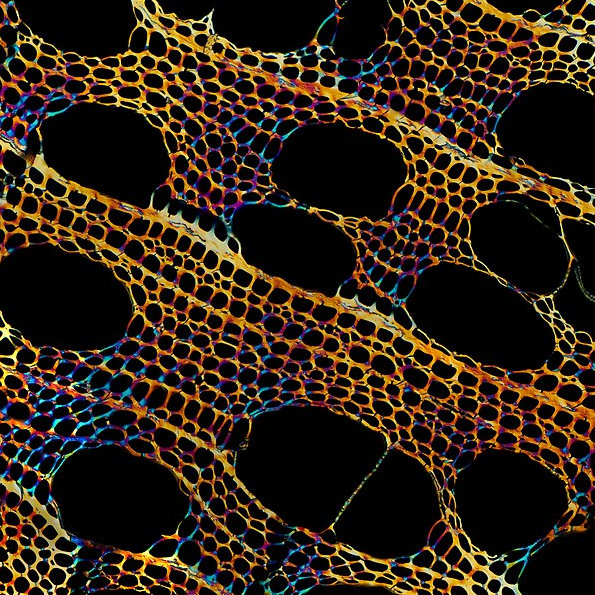
Charcoal under the microscope
Attribution: Alexander Klepnev, CC BY 4.0 https://creativecommons.org/licenses/by/4.0, via Wikimedia Commons
The skeletal structure above is of charred cell walls, made of lignin, the highly durable material which gives strength and rigidity to plants. The pores are the spaces left when everything within them burnt away.
This high porosity gives charcoal a very high surface area to volume ratio. This surface area is also negatively-charged, while many crucial plant nutrients are positively-charged. [Some examples are the potassium ion (K+), magnesium ion (Mg2+), and calcium ion (Ca2+).] Positively-charged ions are called cations.
Charcoal’s/biochar’s very high surface area to volume coupled with its propensity for positively-charged nutrients makes it a strong attractor and retainer of nutrients in the soil. (These nutrients are said to be adsorbed, or clinging to a surface, as opposed to absorbed.)
Nutrients, when held by charcoal/biochar which in turn is more or less suspended in the upper parts of soil, are not leached away but instead become more bioavailable, and in the soil zone most likely to be rich in plant roots and microbes.
Biochar is also hygroscopic (water-attracting), thus helping keep water (and liquid fertilisers) in a soil.
Grinding charcoal/biochar to small pieces increases this surface area to volume ratio, nutrient retention, water retention, and bioavailability.
Small particle size, along with a high surface to volume ratio and affinity for water and positively-charged ions is also why clay and humus particles make a soil fertile.
Pros and Cons of Biochar
It isn’t hard to see why biochar became such a phenomenon. It is also not hard to see why it was latched onto as the great panacea for all things plant, nor why a money-spinning industry of books, products, certification courses, and paid membership organisations sprung up around it.
But wherein lies the truth?
There is no disputing biochar’s properties — those are facts. It is whether biochar uniquely improves plant growth over all other options that needs to be addressed.
Pros
Stable, resistant to decomposition, high porosity, high nutrient retention, high water retention, high bioavailability and high microbial activity, with the in situ proven fertility of terra preta — what is there to argue?!
But organic matter — more accurately, humus — has every one of these as well. (Terra preta is also high in organic matter.)
Charcoal is certainly quicker to make than humus — hours and days versus from weeks to months and years — but do note that home-made biochar may still need as much time to ‘develop’ as the humus (more on this below).
Of course, it’s even quicker to buy in commercially-made ready-to-go biochar, and biochar may thus be a quick way to improve some soils, especially the really sandy types low in organic matter and which drain too quickly. But it’s also just as easy — and more cost-effective? — to buy in commercially prepared compost too, which gets to work just as quickly and eventually becomes long-lasting humus.
Cons
It may be surprising to learn that home-made biochar has deleterious effects if added to soil immediately — this author deliberately uses it as a weed-killer the first year before reaping future long-term benefits! (And note how he casually states “though we didn’t call it biochar then”?)
This is because charcoal straight out of the campfire/charcoal-maker of choice is nothing more than essentially pure, highly-charged carbon. Put straight into soil like that, and it will simply draw up every positively-charged nutrient in sight, locking them out of reach of the plant roots which need them. After a year or two though, as those dead weeds break down and microbes are stimulated into action, an equilibrium establishes between the soil, charcoal and nutrients called cation exchange.
Humus, on the other hand, is already primed from the outset, with the cations from the original plant matter it came from.
Home-made biochar needs to be charged first — even commercial biochar benefits from recharging prior to use — and that same biochar article goes into detail on this. Well worth a read for anyone considering using biochar.
One drawback worth mentioning too, is the process of making it at all. Whether home-made or bought, charcoal (and biochar) is prepared via pyrolysis of wood. Bear in mind, too, that far more charcoal is being made commercially now for biochar than before it entered public consciousness. That’s a lot of infrastructure, power, water, and high-tech equipment to make lumps of carbon intended to be dug straight into the ground. Why not just make humus for the same end-effect with far less input costs?
Heresy though it may be to say, I don’t have a problem with more CO2 in the air (within reason, though up to 1,000-2,000 ppm apparently is quite breathable). But how do people who do have that concern, expect biochar to both reduce carbon emissions and sequester carbon in soil? Producing CO2 in the production of carbon so as to bury said carbon in soil so as to remove carbon from circulation. Again, why not just make humus outright?
Biochar Application Rates
First charge biochar by adding it to compost up to a 1:1 ratio and let the mix sit for two-three weeks.
The following rates are based on these ones, though please note the conversions to metric on that page aren’t correct here in Australia, as they assume a US cup which is smaller than our 250 mL cup.
Potting mix or garden beds: apply charged biochar in a 1:16 ratio. This is one cup of biochar for every 4 L potting mix, or one bucket of biochar for every 16 buckets of soil, or one wheelbarrow of biochar for 16 wheelbarrows of soil, and so on.
For spreading: apply 5 kg charged biochar to a 10 m2 area, dig into the soil, and ideally cover with mulch
Summing Up
Despite $400 books and pricey accreditation schemes revolving around the pyrolysis of wood, biochar as a concept is still valid. We just need to understand it scientifically rather than rely on the hype from people with vested interests, and decide for ourselves whether it is for us or not.
Biochar, as the basis of extremely fertile soil, probably began as a fortunate happenstance in pre-Columbian Amazonian communities, in that those communities probably didn’t purposely set out to build productive soil. Just as today self-seeded watermelon and pumpkin vines in compost piles are observed to thrive, no doubt similar was observed by Amazonian groups with their middens. It is quite feasible that what began as a happy accident did become a deliberate soil-building process over time.
This is because tropical soils are surprisingly poor and not so good for farming. This is partly due to nutrients leaching out from the high rainfall, making nutrient cycling heavily reliant on leaf litter constantly being added to the topsoil. And also partly due to such soils becoming more and more acidic as calcium specifically is leached away from the constant rainfall.
This is why the ‘slash and burn’ farming method is traditional in tropical cultures — there is only so much organic matter in the topsoil to sustain a few years’ crops at best before people must move on to begin anew elsewhere.
Thus it makes sense for people, observing their waste-disposal methods producing such favourable results, to simply keep doing what worked, enforcing a positive feedback loop that enriched their soils more and more each year and which didn’t require them to constantly relocate for food crops.
Biochar worked for these people as that is the system which developed with them. Just as manures and compost have worked for temperate farmers for just as long, as that is the system which developed with them.
Biochar absolutely was beneficial to these societies, and their discovery gifted the world with the proof that incredibly rich soils can be both man-made and long-lasting. We do owe much to those ancient people, whose technique not only helps our understanding of soil science, but also shows promise for many other nutrient- and otherwise poor soils around the world.
It is worth noting though, that incorporating biochar into tropical soils is far more beneficial than into temperate soils, for the reasons mentioned above (poor soils with high rainfall and lower nutrient retention).
For tropical farmers, biochar may well be the great panacea in restoring, or simply maintaining their soil fertility whilst helping them maintain independence from expensive fertilisers.
For the rest of us, in mostly temperate climates where organic matter and nutrients are retained longer in soils, there probably isn’t too much difference in using biochar over humus. The two seem synonymous and interchangeable, especially if the biochar is charged ready for use. This is because the crucial factor is cation exchange capacity, which both biochar and humus are very, very good at.
Both too are stable, long-lasting, and have high water-retaining ability.
Conclusion
Biochar does have genuine soil-improving properties, but so does humus. Biochar is man-made, humus is not. Biochar takes no time to make, but needs the same amount of time to ‘charge’ as humus does to form.
I should make it clear that I have never used biochar, so I am not writing with direct experience of it.
But in comparing the properties of biochar with those of humus (well-degraded compost) elsewhere in the context of soil science, I personally feel that there is no noteworthy difference between the two, and that the end result will be the same.
This is where using one over the other comes down to personal choice and personal circumstances I feel.
For example, people with a small collection of potted houseplants may find it convenient to buy a small bag of (charged) biochar or horitcultural charcoal (is there a difference apart from price?) to augment the potting mix. They may find this results in a reduced need for liquid fertilising. And watering? (I truly don’t know, as I’ve never done this.)
If you have a lot of garden waste and you like making compost (which stabilises into humus over time), keep doing so — your plants will still love you! If you’re into charcoal grills and campfires, experiment with the waste charcoal — but don’t forget to charge it! Or if a mad composter and an occasional griller or camper, be opportunistic, collect the waste charcoal and feed your waste greens compost with it!
And therein lies the crux of the matter — biochar, for the Amazonians, was a waste product. They created beautiful, fertile soils by incorporating waste. Just as people elsewhere also created beautiful, fertile soils, by incorporating their waste products of manure and/or vegetative matter.
At the beginning of this post I said how my opinions on biochar had not changed in all these years — and that is very much true. It still absolutely fascinates me from a soil science point of view, but at the same time seemed a whole lot of bother to make, when humus (from compost) has all the same properties and, for me, is less fuss to make.
It never made sense to invest time and effort to make what was once a waste product tossed in a midden, when I could make a synonymous material from plenty of real, green, waste already here.
In having said that, we do have a modest collection of (waste!) charcoal from occasional charcoal grills and a New Year’s Eve backyard fire, and conveniently it’s also time to begin a new hot-compost pile with a new bunch of green waste.
Feeding one waste already here into another waste already here — that route definitely works for me!



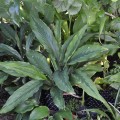




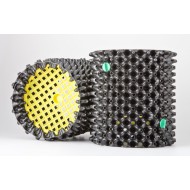
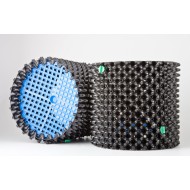
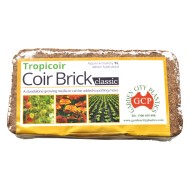
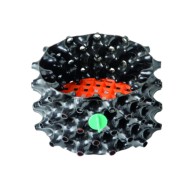

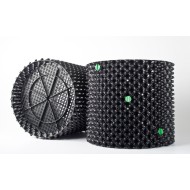
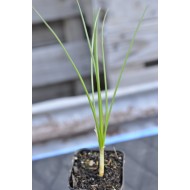


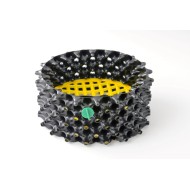
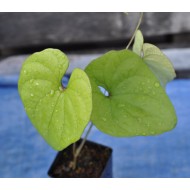
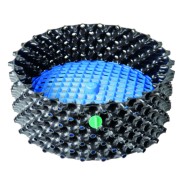
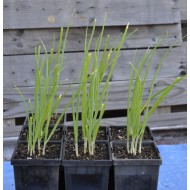
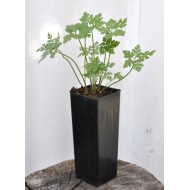
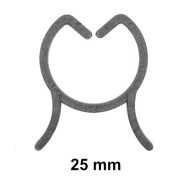


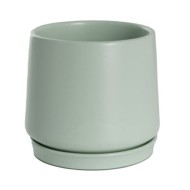





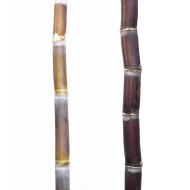
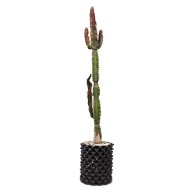
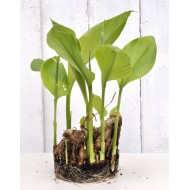
Leave a Comment